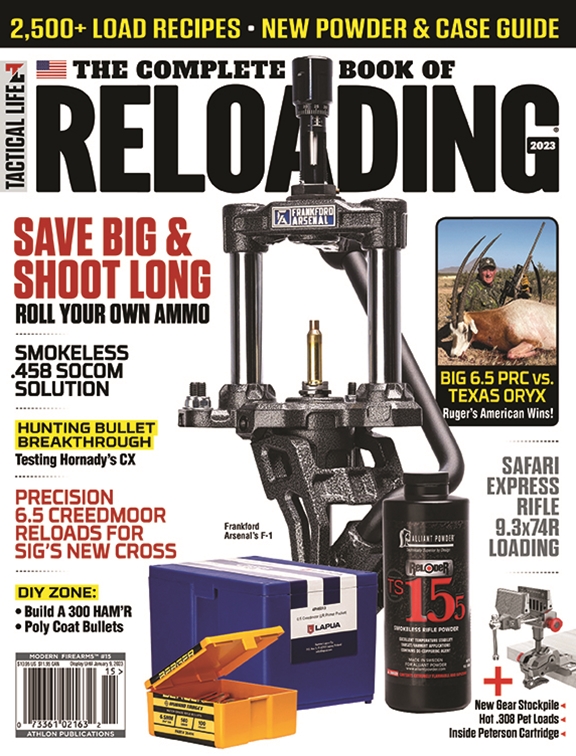What do you get when you cross a mechanical genius with a Tasmanian devil? Well, you get someone who looks and acts a whole lot like Derek Peterson.
These days, with ammunition—specifically hunting and precision fodder—rather scarce, the savvy handloader gets familiar with all the cartridge case companies. Last spring, I made a quick trip up to Pennsylvania to visit Peterson Cartridge to see what they were all about. Then I reacquainted with Peterson Cartridge founder Terry Peterson and met his son, Derek, the company president.
The Rise of Peterson Cartridge
I was exhausted after a couple of hours following Derek around the factory. Following the highly energetic and enthusiastic chief executive was quite a workout. Derek’s enthusiasm for the company and all of its inner workings is as infectious as it is informative. Throughout our visit I continually peppered Derek with questions. What I got back was information-packed, open and honest.
Advertisement — Continue Reading Below
I’ve done many factory tours in the firearms industry over the past 35 years, and the depth of information shared for our TL’s The Complete Book of Reloading readers was top rate.
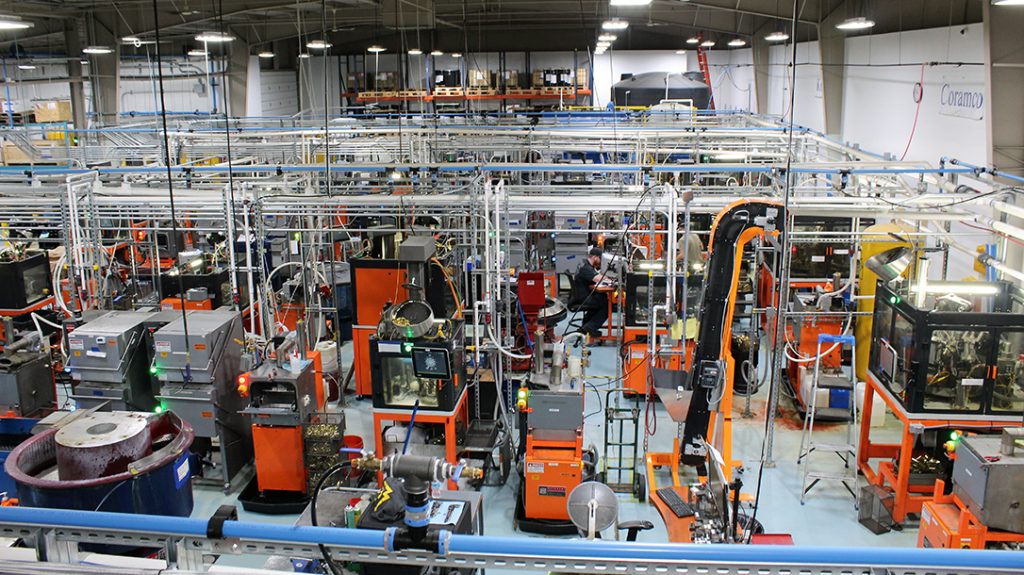
Beginnings
To give a frame of reference, Peterson Cartridge began in 2013. When I asked the company president how the company began, he opened up. “I bought a .243 rifle and I couldn’t find ammo for it, so that got the wheels turning around the concept of creating a business to fill a need.”
Advertisement — Continue Reading Below
“We didn’t know what we were going to be,” Derek said. “We attended our first National Association of Sporting Goods Wholesalers (NASGW) in 2013 to try and figure it out.” By January 2015, Peterson Cartridge attended their first SHOT Show as a displaying manufacturer. That’s where I first met the elder Peterson. “All of the companies placed orders, but the machinery didn’t work,” Derek said. “We needed to redesign all of the forming tooling and did core redesigns, too.”
In the beginning, “We built a hardness tester set up in Terry’s basement to compare everybody’s cases to see how hard they were,” Peterson said. That research provided a baseline of comparison with practically every other American brass case manufacturer.
“What sets Peterson Cartridge apart from other manufacturers?” I asked. “The machinery is more precise, Derek said. “It inherently wants to make a better product. Machines run slow, but we take great pride in our quality. We put in more quality checks than anybody else.”
Growing Gains
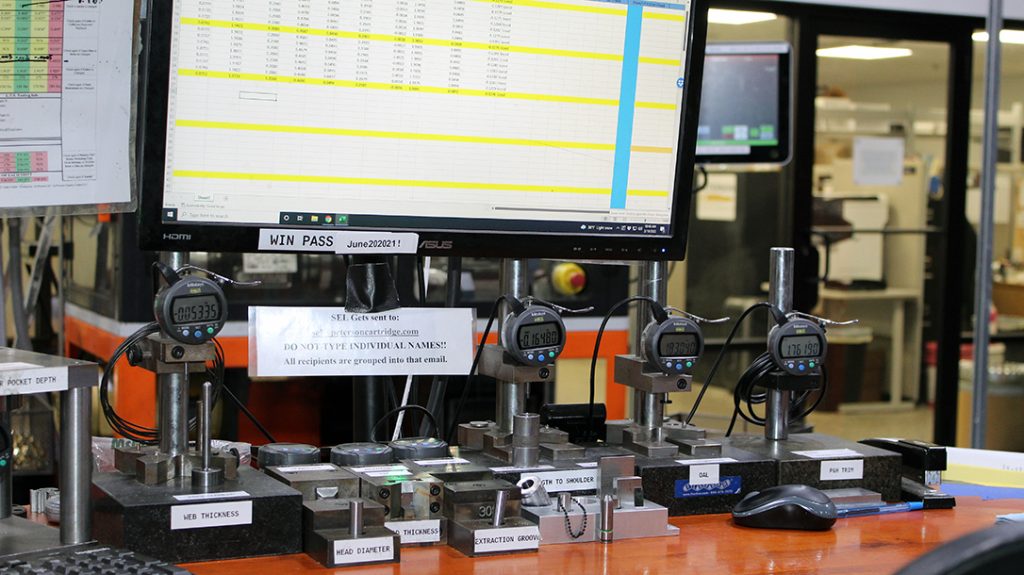
Advertisement — Continue Reading Below
A Surging Company
To gain some perspective about Peterson Cartridge, one only needs to survey their growth over the past eight years. After leaving Terry’s basement, their last building’s 4,000 square feet was big enough. Today, Peterson Cartridge’s 21,000 square feet is bursting at the seams.
Another unit of measure that speaks to their growth is the number of cases produced each year.
“In 2015, we made 100,000 parts (cases) total,” Derek said. “Right before SHOT Show 2016, we made our first .338 Lapua.” The following year, case production grew to 900,000. In 2017, they reached a milestone, manufacturing 1.1 million cases. Business and production nearly doubled in 2018, with 2.1 million cases made. The following year, production ticked up to 2.5 million. In 2020, production grew to 4 million. By 2021, production grew to 7.1 million cases made and sold. “We’re set to do 11 million in 2022,” Derek said with a smile.
“We didn’t add any machines until 2019,” Derek said. “The third line was up and running in February 2021.”
Advertisement — Continue Reading Below
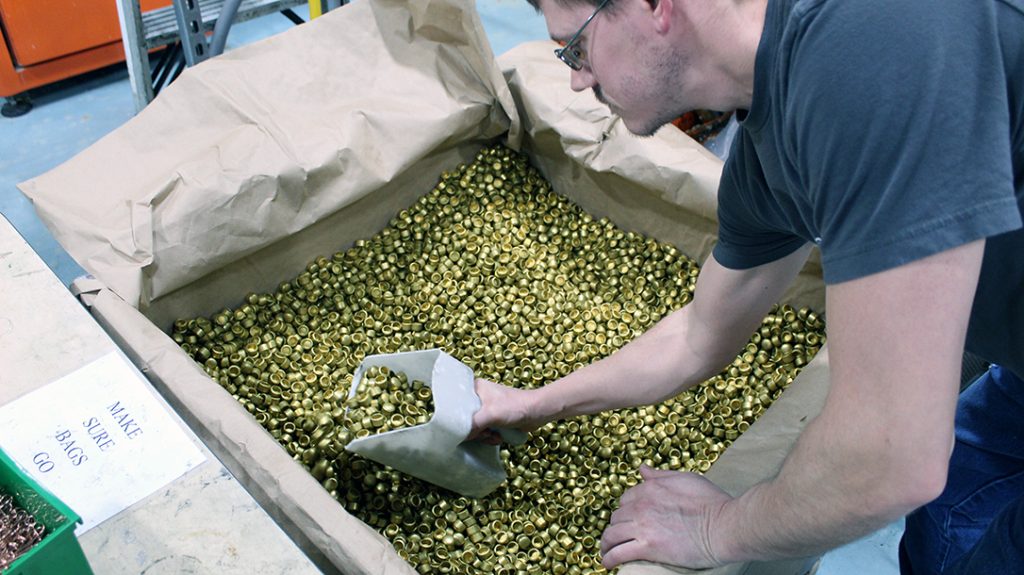
Sweat Equity
Peterson Cartridge didn’t get to where they are today by hitting the Easy button. Derek’s sweat, patience and perseverance made a difference. “I moved out to Utah, where our machinery came from,” Derek said. “When I got there and learned that none of our machines were done, I actually helped the company build machines from February to July. I got familiar with the machines, and the machinery was up and running in July and we made some ugly .308 cases. We tackled every problem of getting the cases right, but the machinery would destroy itself.”
Once the machines were capable of mass production, Derek moved the machinery back to Pennsylvania.
Advertisement — Continue Reading Below
To get an idea of what it takes to make a single cartridge case, 19 different machines in a work cell must work in harmony to produce one cartridge case. “I’ve lived at the shop, have a cot here and spend a lot of nights here,” Derek said. “We had been back in Pennsylvania about a year, and I thought we could make a new case, for us. We started with 7mm-08. Getting the belted magnum figured out took the longest. It took forever. It was a turning point.”
Belted Magnums
Peterson announced in July 2020 that the company “has now added .300 Winchester Magnum brass to its product line,” Derek said. “The road for us to produce this belted Magnum case has been long, frustrating and expensive. It has taken us over three years to release this cartridge and cost us well over $50,000 in experimental tooling alone.”
Peterson continued, “Producing a brass casing with a really good belt is a difficult thing. Getting the tooling just right is an iterative process, and these .300 Win. Mags took more iterations than I care to remember.
Advertisement — Continue Reading Below
“To make a new caliber casing for the first time, we design and order all the tooling. After it arrives, we do what we call a proof-of-concept (POC) run. With most of the 30-plus new tool packs we’ve designed, we end up with a ‘best vision’ casing after one or two iterations.
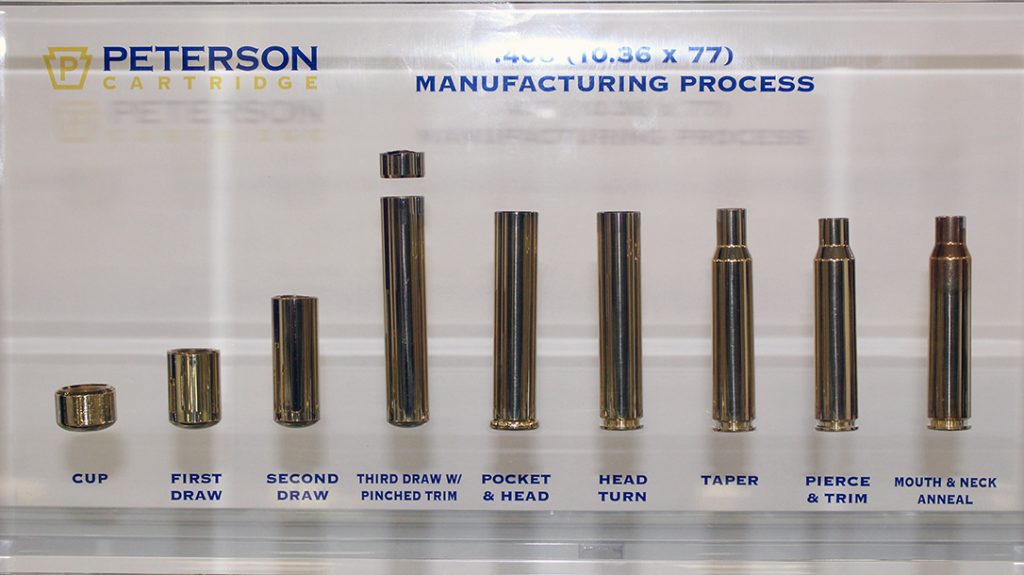
“But these .300 Win. Mags! With many of the POC runs, the resultant belt wasn’t crisp enough. So, we would redesign and order different tooling and try again. With some runs we’d get a good belt, but it wasn’t in the exact correct location. Some runs, the belt was good and in the correct location, but the equipment wouldn’t run it efficiently, or the scrap rate was too high. It took a few different tooling iterations to get the grain structure in the casing walls just right. After some of the failed iterations we would speculate, maybe the problem is with the dimensions of the brass cups we are using as raw material. So, we’d redesign those, and try again.
Advertisement — Continue Reading Below
“But after three years of unsettling self-doubt, and countless iterations we got the belt. We can now make belted magnum casings! And we have really good .300 Win. Mag casings on the shelf, with as good a belt as any in the industry. Our ballistician has shot some of these 20 times in a row, at SAAMI max pressure, with a minimum shoulder resize and they are still holding up well.”
The Peterson Brass Difference
The benefit of putting more bullets in the same hole on the target is achieved by a computer-controlled, servo-motor-driven manufacturing process. “Our competitors hold dimensional tolerances of +/- 0.003, but we hold tolerances of 0.0001,” Derek said.
Another bragging point for Peterson brass is consistent neck tension. They’ve got some proprietary processes going, but they do anneal with electric coils, versus annealing with flame. They also feature cases with flash holes without burrs, which provides more consistent ignition.
Advertisement — Continue Reading Below
Another benefit that’ll win reloaders over is Peterson claims more reloads per case. They’ve perfected the metal’s grain structure, which stands up under pressure.
To see how nit-picky Peterson is about quality control, you have to look no further than their employees wearing gloves. “Equipment operators and inspectors wear gloves,” Derek said. “If a casing is inadvertently touched by bare hands, it is thrown away.”
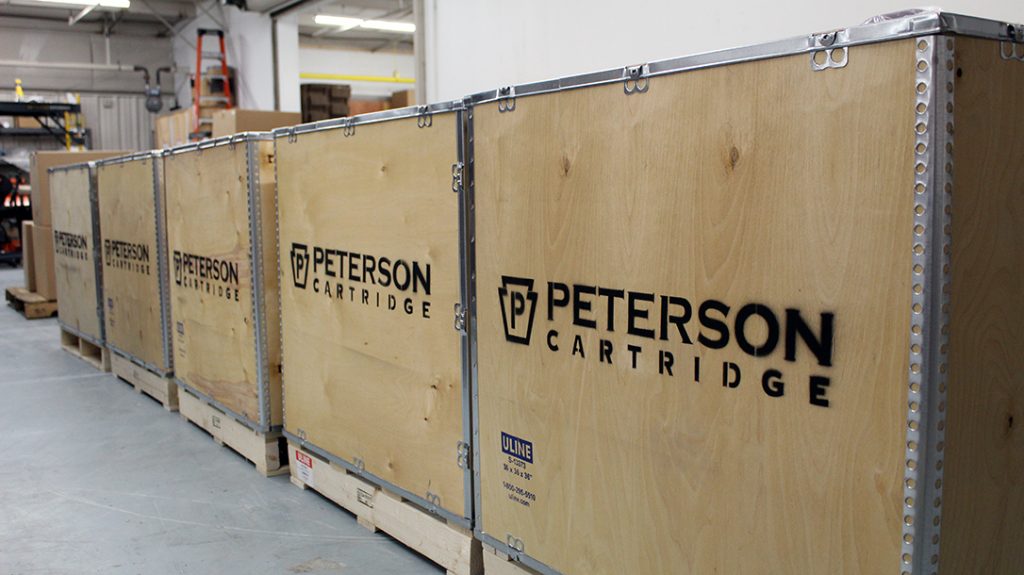
The Road Ahead
“We’re chasing the causes of defects,” Derek said. “We put process improvements in to get the rates up, and we’re trying to find ways to use less water. We use millions of gallons a year now.” Peterson washes brass at eight different points during the manufacturing process. “This removes the impurities created by the annealing process,” he added. “Our competitors that wash less simply work those impurities into their brass.”
The last stop on my tour was their research laboratory and firing range. I asked about the 6.5 PRC and .300 PRC, which has caused trouble with multiple case firings. We loaded up the same case at maximum pressure and fired, reloaded and did it again 10 times. Going back to the lab, minimal case stretching from firing and being worked in a die were measurable. This may be the solution to the dreaded “PRC click.”
When you get around to checking out Peterson Cartridge cases, you’ll be pleased to know that Derek is still toiling away to be sure that next year’s work is even better than the quality cases that are in your hands now. For more information, visit petersoncartridge.com.
This story originally ran in the 2023 issue of Tactical Life’s The Complete Book of Reloading. Get your copy today at OutdoorGroupStore.com.
